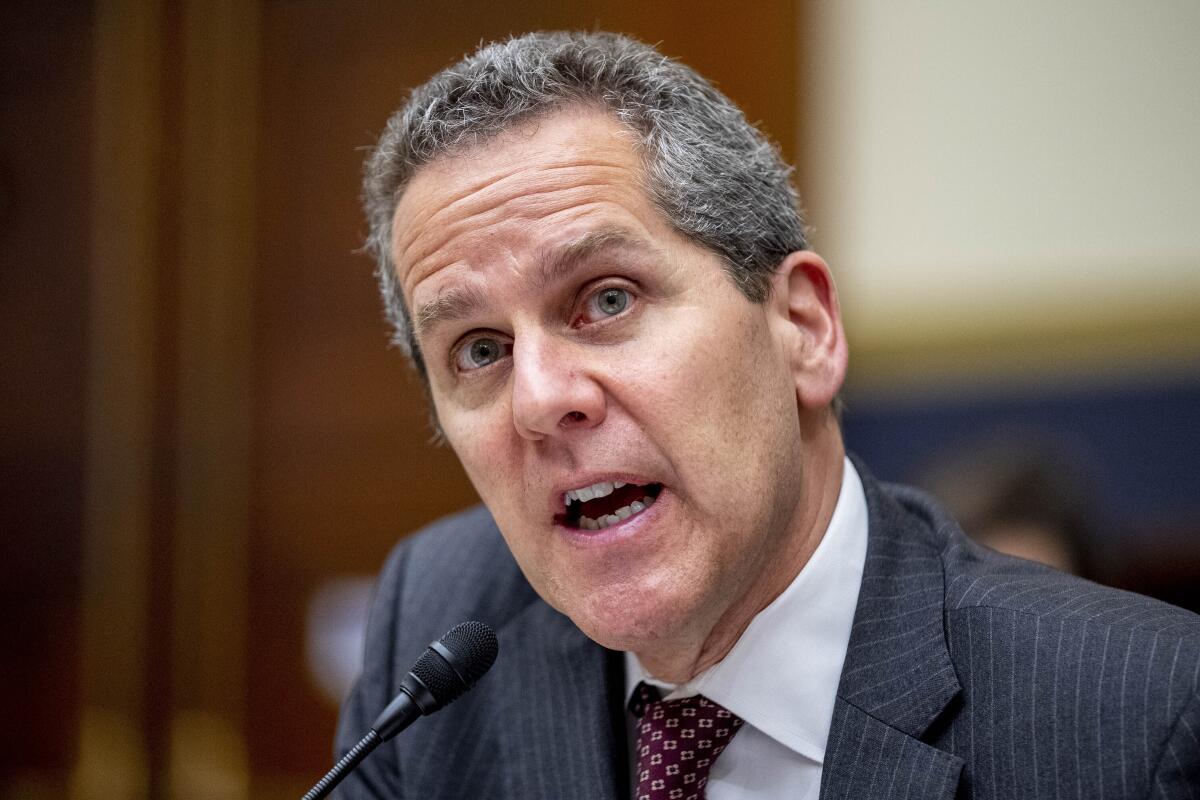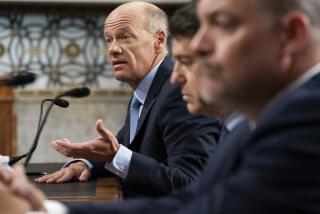Fed faults Silicon Valley Bank execs and itself in bank failure

- Share via
WASHINGTON — Silicon Valley Bank failed due to a combination of extremely poor bank management, weakened regulations and lax government supervision, the Federal Reserve said Friday, in a highly anticipated review of how the central bank failed to properly supervise the bank before it collapsed early last month.
The report, authored by Federal Reserve staff and Michael Barr, the Fed’s vice chair for supervision, takes a critical look at what the Fed missed as Silicon Valley Bank grew quickly in size in the years leading up to its collapse. The report also points out underlying cultural issues at the Fed, where supervisors were unwilling to be hard on bank management when they saw growing problems.
“The Federal Reserve did not appreciate the seriousness of critical deficiencies in the firm’s governance, liquidity, and interest rate risk management. These judgments meant that Silicon Valley Bank remained well-rated, even as conditions deteriorated and significant risk to the firm’s safety and soundness emerged,” the report said.
Silicon Valley Bank was the go-to bank for venture capital firms and technology start-ups for years, but failed spectacularly in March, setting off a crisis of confidence for the banking industry. Federal regulators seized Silicon Valley Bank on March 10 after customers withdrew tens of billions of dollars in deposits in a matter of hours.
Two days later, they seized Signature Bank of New York. Although regulators guaranteed all the banks’ deposits, customers at other midsize regional banks rushed to pull out their money — often with a few taps on a mobile device — and move it to the perceived safety of big money center banks such as JPMorgan Chase.
The report also looks at the role social media and technology played in the bank’s last days. While the bank’s management was poor and ultimately that was the reason the bank failed, the report also notes that social media caused a bank run that happened in just hours, compared with days for earlier bank runs like those seen in 2008.
Although the withdrawals have abated at many banks, First Republic Bank in San Francisco appears to be in peril, even after receiving a $30-billion infusion of deposits from 11 major banks in March. The bank’s shares have plunged 57% this week after it revealed the extent to which customers pulled their deposits in the days after Silicon Valley Bank failed.
The nation’s banks are regulated by a troika of regulators: the Federal Reserve, the Office of the Comptroller of the Currency and the Federal Deposit Insurance Corporation. All have been criticized for potentially missing signs that Silicon Valley Bank and Signature Bank might be in trouble.
Barr appeared at two hearings in Congress last month and acknowledged that Federal Reserve bank supervisors had warned Silicon Valley management as early as the fall of 2021 of risks stemming from its business model, but the bank’s managers failed to take the steps necessary to fix the problems.
Republicans at both hearings had criticized federal regulators for failing to act with the proper sense of urgency.
More to Read
Inside the business of entertainment
The Wide Shot brings you news, analysis and insights on everything from streaming wars to production — and what it all means for the future.
You may occasionally receive promotional content from the Los Angeles Times.










